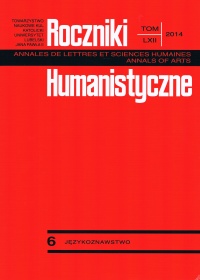The Structural Component of the Novella Text Type in the Context of the Changes in the Genre Itself
Abstract
This article discusses the exponents of the structural component of the novella, as seen from the perspective of the evolution of this genre - understood not only as a literary phenomenon, but also a case of social communication, embedded in its cultural and anthropological environment. The generic form is understood as a component of the genre constellation, comprising such text types as anecdote, joke or story.
In the case of a prototypical novella, that is a genre that relies on the form of a short or relatively short prose text, one can observe a tendency towards its noticeable stability, since the Old Polish and the 19th-century status of this genre is largely comparable. In both époques, one can observe the prevalent tri-partite pattern, yet the way in which it was practically realized could differ at times. With time, the central segment of the novella tended to be expanded, yet the three main structural components were easily recognizable. This structural organization betrays a clear link with other related genres, like the joke and the anecdote. These three text types remained in a close structural correlation since antiquity. The role of the story punch line also changed. In Old Polish, it constituted a vital structural component of the genre, even though it was not always overtly expressed. The Positivist novella resigns from its reliance on the punch line, which is owing to the changes in the subject matter and, hence, its role in the communication universe. The punch line is substituted with a more complex message that is almost always placed on the side of the text recipient. The constrained length of the novella seems to be paramount in ensuring its structural stability. This shortness is anchored genetically in the heritage of the anecdote - short and concise, daily life, oral narrative.
Copyright (c) 2014 Roczniki Humanistyczne

This work is licensed under a Creative Commons Attribution-NonCommercial-NoDerivatives 4.0 International License.





